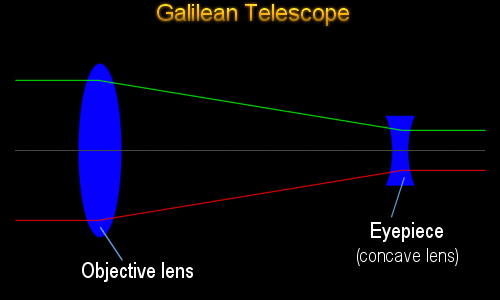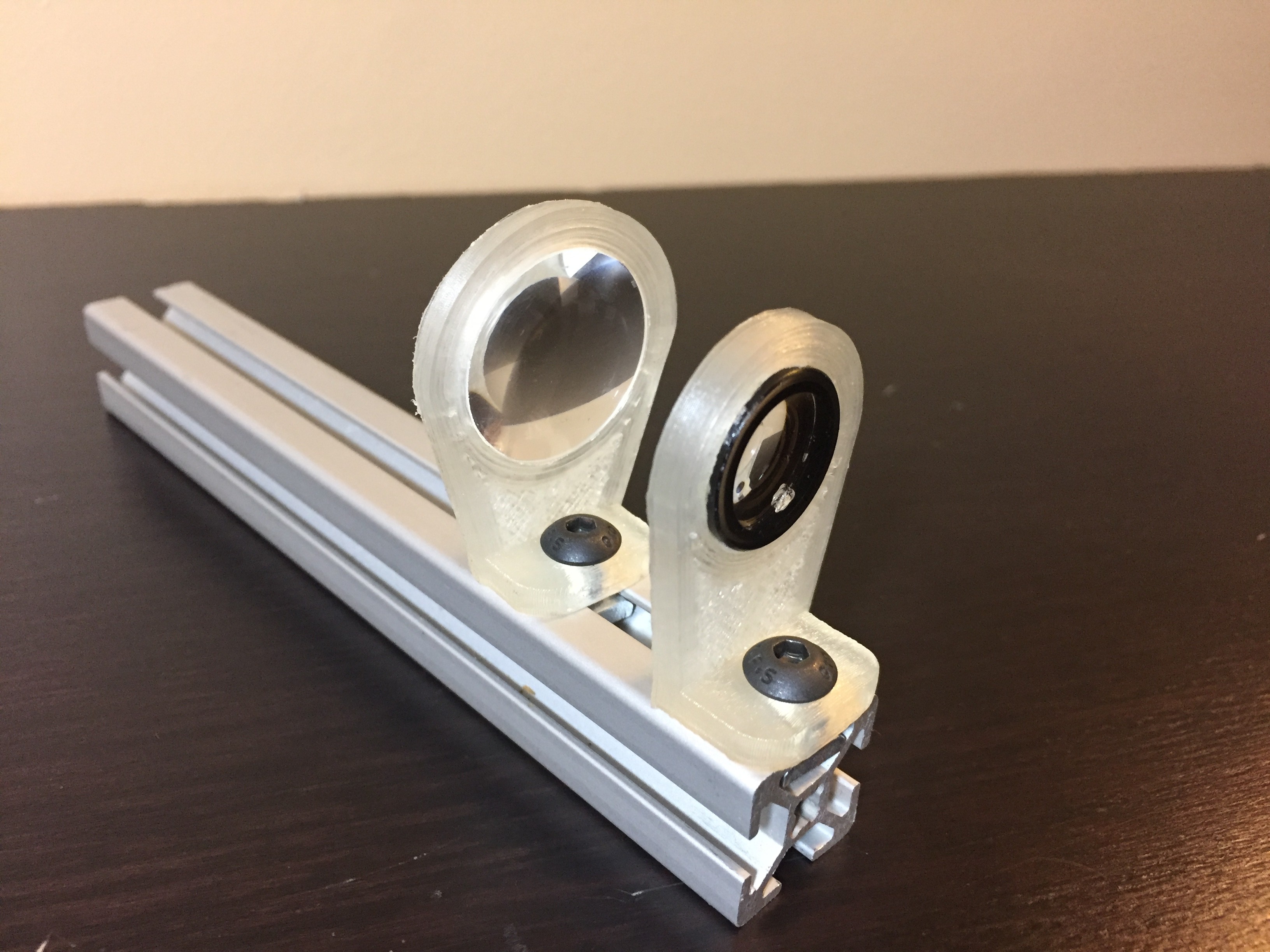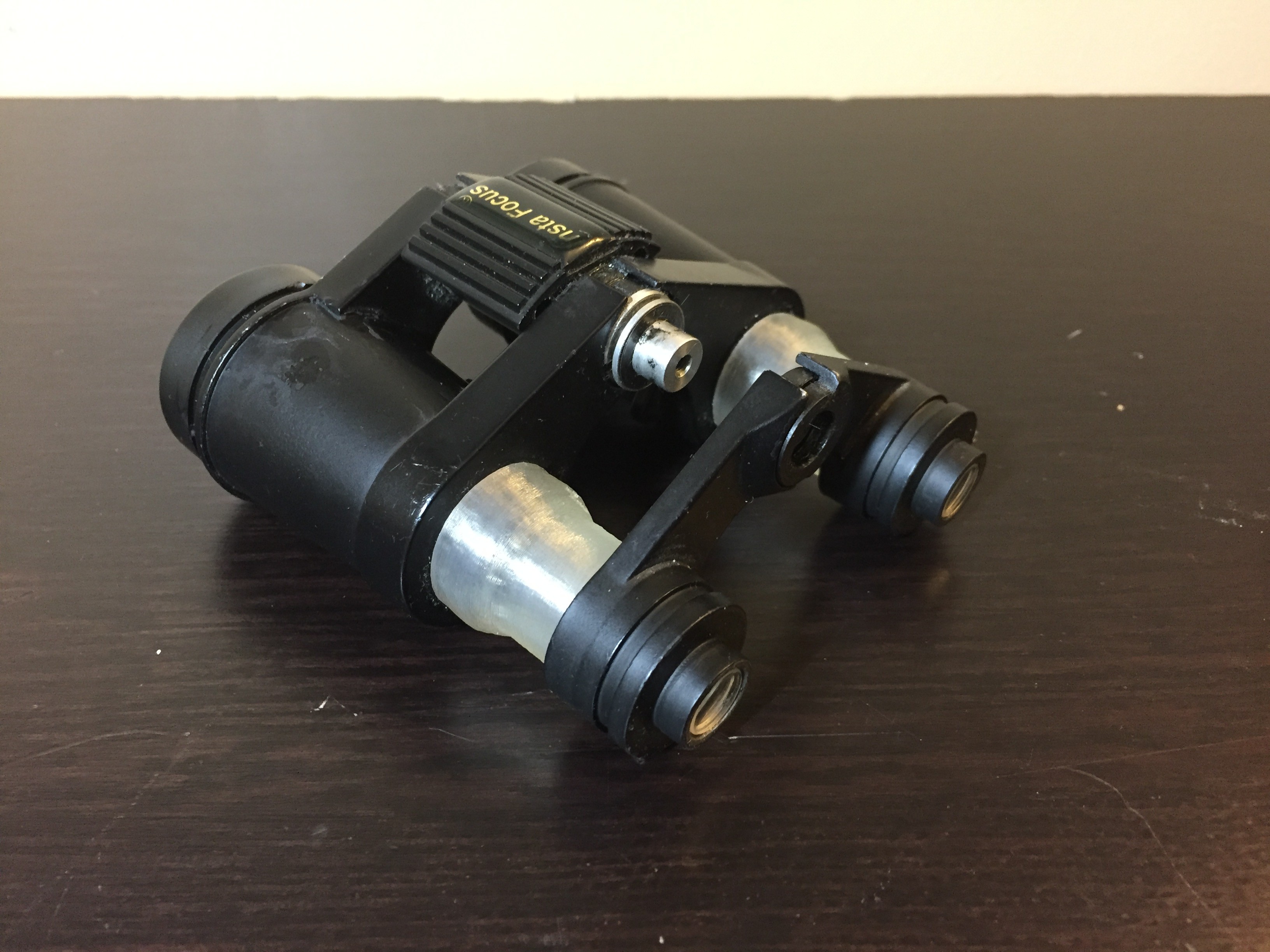Presently, I am primarily looking at a Galilean design, which involves using a double concave lens (for the eyepiece) and a plano-convex lens for the objective lens (end closer to the object we are looking at).
This is the configuration that many of the surgical and dental loupe's use. It also seems to be the arrangement used in some types of binoculars (and "opera glasses").
Just for something to start with, I ordered a double concave and a double convex lens from SurplusShed.
- Double Concave (18.2mm diameter, -12mm focal length)
- Double Convex (25mm diameter, 25mm focal length)
Very Basic Galilean Telescope Design

The Galilean Telescope utilizes a convex objective lens coupled with a double concave lens. This arrangement allows for a shorter length telescope with greater magnification and a image that is not inverted.
Testing the lenses that I ordered
I designed and 3D-printed lens holders, that could mount to aluminum T-Slot extrusion (to keep them steady and aligned). This combination of lenses did not perform as I'd hoped (focus was poor, field and depth of view were very limited).
Along with the lenses I ordered, I decided to experiment with things I had on hand - in this case a set of pocket binoculars. They were unable to focus on objects less than about 5 feet away. While using the focus lever I noticed that when I focused on closer objects the eye piece moved back (away from the object lens - the lens facing the object).
So, I decided to see if I could move the eye pieces even further away to focus on closer objects. To maintain alignment of the lenses I designed and 3D-printed an extension to fit the eye pieces of the binoculars.
It worked, nearly perfectly. I was able to focus clearly on objects about 2 feet away, with magnification. The only issue is that the the right and left images do not converge, since the binocular body directs the view directly in front and almost parallel.
I can see that I'm on the right track, thankfully. Now I just need to be able to adjust the angles of the lenses to converge at the correct distance.
 Tom Meehan
Tom Meehan

Discussions
Become a Hackaday.io Member
Create an account to leave a comment. Already have an account? Log In.